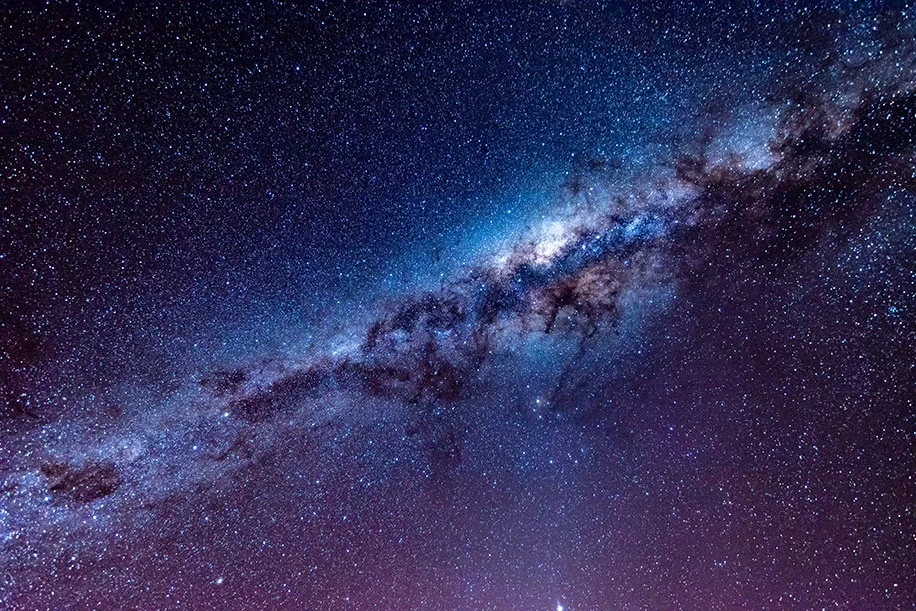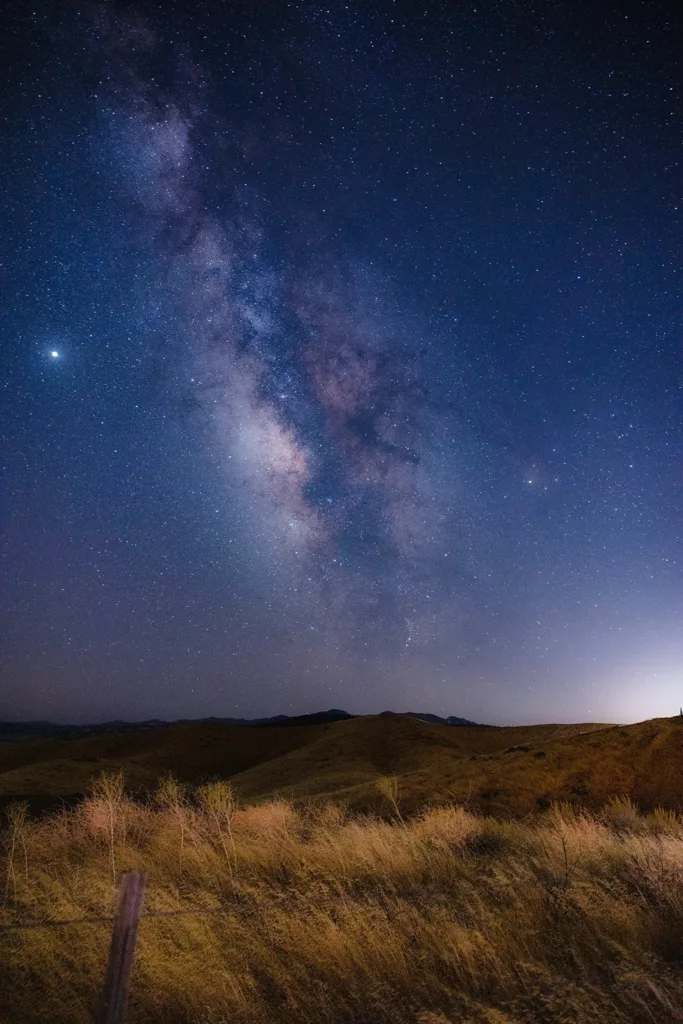Exploring the Milky Way: Tips for Amateur Astronomers
The Milky Way, a shimmering band of light that graces our night sky, is more than just a celestial spectacle; it’s our cosmic home. Stretching across the vast expanse of the heavens, this majestic spiral galaxy comprises billions of stars, including our very own Sun. For amateur astronomers, the Milky Way offers a treasure trove of exploration opportunities, from its dense galactic center to its sprawling spiral arms.
Delving into its mysteries not only connects us to the universe at large but also offers insights into the very origins and evolution of our solar system. As we stand on the threshold of space, gazing up, the importance of understanding and exploring the Milky Way becomes evident. It’s not just about the pursuit of knowledge; it’s about discovering our place in the grand tapestry of the cosmos.

Understanding the Milky Way
Our journey through the cosmos brings us to the heart of our galactic home, the Milky Way. This magnificent structure, with its vast expanse and intricate design, has a story that dates back billions of years.
A Glimpse into the Past: The Formation of the Milky Way
The origins of the Milky Way can be traced back to approximately 13.5 billion years ago, not long after the Big Bang. Born from the gravitational union of smaller proto-galaxies, our galaxy underwent a series of mergers and transformations. Over time, vast clouds of gas and dust coalesced, giving birth to stars and star clusters. These early formations set the stage for the galaxy’s evolution, shaping its distinctive spiral pattern and laying the foundation for the diverse celestial bodies we observe today.
Key Features of the Milky Way: A Guided Tour
- Galactic Center: At the heart of the Milky Way lies its bustling center, a dense region teeming with stars, gas, and dust. This area is also home to a supermassive black hole, Sagittarius A*, whose gravitational pull orchestrates the dance of surrounding stars.
- Spiral Arms: Radiating from the galactic center are the Milky Way’s signature spiral arms. These winding structures, named after constellations like Perseus and Cygnus, are star-forming regions where new stars are born, illuminating the galaxy with their brilliance.
- Halo: Encircling the Milky Way is the galactic halo, a vast, spherical region populated by ancient stars and globular clusters. This halo holds clues to the galaxy’s early history and its interactions with neighboring galaxies.
As we delve deeper into the Milky Way’s intricacies, we uncover a dynamic, ever-evolving entity. Its rich history and diverse features offer a testament to the wonders of the universe and our quest to understand it.
Best Times to Observe the Milky Way
Gazing at the Milky Way is a celestial experience like no other. This luminous river of stars stretches across the night sky, offering a breathtaking panorama of our galaxy. However, to truly appreciate its splendor, certain conditions are paramount.
The Crucial Role of Dark Skies
The brilliance of the Milky Way can easily be overshadowed by the artificial lights of our modern world. Light pollution, the bane of stargazers, washes out the delicate details of our galaxy, rendering it nearly invisible in heavily urbanized areas. Dark skies are not just a luxury but a necessity for astronomical observations. They provide the contrast needed to distinguish the faint glow of the Milky Way from the backdrop of the night sky. By seeking out remote locations away from city lights or designated dark sky preserves, observers can ensure an unobstructed and pristine view of our galactic home.
When to Look Up: Ideal Months and Times
The visibility of the Milky Way varies throughout the year, influenced by Earth’s position in its orbit around the Sun. Generally, the best months to observe the galaxy in the Northern Hemisphere are from April to September. During these months, the densest part of the Milky Way, near the galactic center, becomes visible, especially in late summer. For optimal viewing:
- Evening Observations: Post-sunset during the months of April and May.
- Pre-dawn Observations: Before sunrise from late August to September.
- Peak Nights: Moonless nights, especially during the New Moon phase, offer the darkest conditions.
Timing is everything. As the Earth rotates, the position of the Milky Way changes, so planning your observation sessions around the galaxy’s highest point in the sky can yield the most spectacular views.
Essential Equipment for Milky Way Exploration

The vast expanse of the Milky Way, with its myriad stars and celestial wonders, beckons to be explored. To truly delve into its depths and capture its beauty, the right equipment is indispensable. Here’s a guide to the essential gear for your Milky Way adventures.
Telescopes: Your Window to the Stars
Navigating the cosmos requires a reliable telescope, a tool that magnifies distant celestial objects and brings them into clear focus.
- For Beginners: A refractor telescope is an excellent choice. Known for its simplicity and ease of use, it offers clear, sharp images, making it ideal for those new to astronomy. Brands like Celestron and Orion offer beginner-friendly models that are both affordable and effective.
- For Intermediate Astronomers: A Schmidt-Cassegrain or Dobsonian telescope is recommended. These telescopes provide greater magnification and light-gathering capabilities, allowing for more detailed observations of the Milky Way’s features.
Cameras: Capturing the Galactic Splendor
The art of astrophotography transforms fleeting celestial moments into lasting memories.
- DSLRs: Digital Single-Lens Reflex cameras are versatile and widely used for astrophotography. Brands like Canon and Nikon offer models with high ISO ranges, essential for capturing the Milky Way’s faint light.
- Dedicated Astrophotography Cameras: These specialized cameras, such as those from ZWO or Atik, are designed exclusively for night sky photography, offering enhanced sensitivity and cooling systems to reduce noise.
Accessories: Enhancing Your Observational Experience
The right accessories can elevate your Milky Way exploration to new heights.
- Star Trackers: Devices like the Sky-Watcher Star Adventurer or iOptron SkyGuider Pro allow for long-exposure shots without star trails, capturing the Milky Way in all its glory.
- Filters: Light pollution filters help in reducing the effects of artificial light, ensuring clearer images of the galaxy.
- Software: Post-processing tools like Adobe Photoshop, DeepSkyStacker, and PixInsight allow for image enhancement, bringing out the intricate details of the Milky Way.
Equipped with the right tools and knowledge, the wonders of the Milky Way are within your grasp. Embark on your galactic journey with confidence and awe.
Choosing the Perfect Location
The Milky Way, with its radiant bands of stars and cosmic dust, is a sight to behold. However, the brilliance of this galactic marvel can be easily overshadowed by the glaring lights of urban landscapes. To truly appreciate its grandeur, selecting the right location is paramount.
The Quest for Darkness: Why Dark Sky Locations Matter
In an age where city lights dominate the night, the sanctity of dark skies is a rare commodity. These pristine environments, untouched by artificial illumination, offer the best conditions for stargazing. Light pollution, prevalent in urban and suburban areas, not only masks the subtle details of the Milky Way but also disrupts the natural rhythms of wildlife. By prioritizing dark sky locations, you ensure an unadulterated and ethereal view of our galaxy, while also promoting ecological balance.
Global Hotspots: Top Milky Way Viewing Spots Worldwide
The world is dotted with locations that offer breathtaking views of the Milky Way. Here are some top recommendations:
- Atacama Desert, Chile: Renowned for its clear skies, this desert landscape provides a surreal backdrop for the Milky Way.
- Mauna Kea, Hawaii: Perched high above the Pacific, this volcanic peak offers a panoramic view of the stars.
- Namib Desert, Namibia: The vast African skies come alive with a riot of stars in this remote wilderness.
- Aoraki Mackenzie Dark Sky Reserve, New Zealand: A haven for stargazers, this reserve boasts some of the darkest skies in the Southern Hemisphere.
Tools to Guide Your Way: Finding Local Dark Sky Areas
While global hotspots offer unparalleled views, local dark sky areas can also provide a rewarding experience. Tools and platforms like the Dark Sky Finder and the International Dark-Sky Association’s map can help you locate nearby dark sky sanctuaries. These resources provide detailed information on light pollution levels, ensuring you pick the ideal spot for your Milky Way adventure.
In the quest to witness the wonders of the Milky Way, location is key. By choosing the perfect spot, you set the stage for an astronomical experience that is both mesmerizing and enlightening.
Tips for Observing and Photographing the Milky Way
The Milky Way, our galaxy’s mesmerizing tapestry of stars, offers a visual feast for both observers and photographers. Whether you’re gazing through a telescope or capturing its beauty through a lens, certain techniques can enhance your experience. Here’s a guide to make the most of your Milky Way adventures.
Techniques for Visual Observation
- Adapt Your Eyes: Spend at least 20 minutes in darkness to allow your eyes to adjust. This adaptation enhances your ability to discern fainter stars and structures of the Milky Way.
- Use Averted Vision: Instead of looking directly at a faint object, glance slightly to the side. This technique utilizes the more sensitive parts of your retina, improving your ability to detect subtle details.
- Employ Binoculars: A pair of binoculars can offer a wider field of view than telescopes, making them ideal for sweeping across the Milky Way’s vast expanse.
- Sketching: Documenting your observations through sketches can help solidify details and patterns, enhancing your observational skills over time.
Basics of Milky Way Photography
- Settings:
- Aperture: Use a wide aperture (e.g., f/2.8 or f/4) to allow maximum light.
- ISO: Opt for a higher ISO setting (e.g., 1600 or 3200) to enhance the camera’s sensitivity to light.
- Shutter Speed: A shutter speed of 20-30 seconds can capture the Milky Way without introducing star trails.
- Composition:
- Foreground Interest: Incorporate elements like trees, mountains, or structures to add depth and context to your shots.
- Rule of Thirds: Position the Milky Way along one of the vertical thirds lines for a balanced composition.
- Post-Processing:
- Noise Reduction: Use software tools to minimize the graininess introduced by high ISO settings.
- Enhance Contrast: Adjusting the contrast can help bring out the Milky Way’s details and structures.
- Saturation and White Balance: Tweak these settings to achieve the desired color tone and vibrancy.
The Milky Way, with its myriad wonders, awaits your exploration. Armed with these tips and techniques, you’re poised to witness and capture the galaxy in all its glory.
Notable Features to Observe in the Milky Way
The Milky Way, a sprawling canvas of cosmic wonders, is replete with features that captivate the observer’s eye. From dense star clouds to nebulous formations, our galaxy offers a diverse array of celestial landmarks. Here’s a guide to some of the most notable features you shouldn’t miss.
Sagittarius Star Cloud
Nestled within the constellation of Sagittarius, this star cloud is one of the most luminous patches in the Milky Way. A dense aggregation of stars, it stands out brilliantly against the darker backdrop of the galaxy, offering a spectacular sight, especially through binoculars or a wide-field telescope.
Galactic Center
The very heart of our galaxy, the Galactic Center, is a bustling hub of cosmic activity. Dominated by the presence of a supermassive black hole, Sagittarius A*, this region is densely packed with stars, gas, and dust, making it a radiant focal point in the Milky Way’s structure.
Other Points of Interest
- Scorpius and Ophiuchus Regions: These neighboring constellations host a plethora of star clusters and nebulae, offering a rich observational experience.
- Cygnus Star Cloud: Located within the Cygnus constellation, this star cloud is a prominent feature, especially during summer months.
Deep-Sky Objects Within the Milky Way
- Nebulae: These vast clouds of gas and dust are stellar nurseries where new stars are born. Notable examples include the Eagle Nebula, Trifid Nebula, and Orion Nebula.
- Star Clusters: Aggregations of stars bound by gravity, clusters like the Pleiades and Hercules Cluster, offer a dazzling array of stars in a compact region.
- Supernova Remnants: The remnants of exploded stars, these structures, such as the Crab Nebula, bear witness to the violent ends of massive stars.
The Milky Way is a treasure trove of celestial wonders, each feature telling a unique story of cosmic evolution and grandeur. As you embark on your observational journey, let these landmarks guide your way, offering glimpses into the vastness and beauty of our galactic home.
Challenges in Milky Way Observation and How to Overcome Them
Observing the Milky Way is a rewarding experience, offering glimpses into the vastness of our galaxy. However, several challenges can hinder optimal viewing. By understanding these obstacles and implementing solutions, you can enhance your observational experience.
The Blight of Light Pollution
Urbanization and the proliferation of artificial lighting have cast a bright veil over the night sky, obscuring the delicate details of the Milky Way. This phenomenon, known as light pollution, not only diminishes the visibility of celestial objects but also disrupts ecosystems and human health.
Solutions:
- Seek Dark Sky Areas: Prioritize locations away from city lights. National parks, remote countryside, and designated dark sky preserves often offer the best conditions.
- Use Light Pollution Filters: These specialized filters, available for both telescopes and cameras, can enhance the contrast of celestial objects against the brightened sky.
- Advocate for Responsible Lighting: Support and promote initiatives that encourage the use of downward-facing lights, dimmers, and timers in urban areas.
Weather Conditions and Atmospheric Disturbances
The Earth’s atmosphere, while essential for life, can pose challenges for astronomical observations. Cloud cover, humidity, and atmospheric turbulence can distort or block views of the Milky Way.
Solutions:
- Plan Around Clear Skies: Utilize weather forecasting apps and websites that specialize in astronomical conditions, such as Clear Sky Chart or MeteoBlue.
- Opt for Higher Altitudes: Elevated locations, like mountaintops, often lie above atmospheric disturbances, offering clearer views.
- Use Adaptive Optics: Advanced telescopes equipped with adaptive optics can correct for atmospheric distortions in real-time, enhancing image clarity.
The challenges of Milky Way observation, while significant, are not insurmountable. With the right strategies and tools, you can navigate these obstacles and immerse yourself in the wonders of our galaxy.
Joining the Community: Clubs and Organizations
Astronomy, while a deeply personal journey, is also a shared passion that thrives in the company of like-minded enthusiasts. By joining the broader community, you can enrich your experience, gain knowledge, and share the wonders of the Milky Way with others.
The Allure of Astronomy Clubs
Across the globe, astronomy clubs bring together individuals with a shared love for the cosmos. These clubs offer more than just camaraderie; they provide a platform for learning, exploration, and collaboration.
Benefits:
- Shared Resources: Many clubs offer access to advanced telescopes, observatories, and equipment that individual members might not possess.
- Workshops and Lectures: Regular sessions with experts provide insights into the latest astronomical research and techniques.
- Star Parties: These communal observation events, often held in dark sky locations, offer spectacular views of celestial objects and are a highlight for many club members.
Navigating the Digital Cosmos: Online Forums and Platforms
In today’s digital age, the astronomy community thrives online as well. Various platforms cater specifically to Milky Way enthusiasts and general stargazers.
Popular Platforms:
- Cloudy Nights: A comprehensive forum where astronomers discuss equipment, observation techniques, and share their experiences.
- Stellar Overload: A platform dedicated to astrophotography, offering tutorials, image galleries, and peer reviews.
- Astronomy Stack Exchange: A Q&A platform where beginners and experts alike can seek answers to their astronomical queries.
By immersing yourself in both physical and digital communities, you open doors to a wealth of knowledge, experiences, and friendships. The Milky Way, in all its splendor, becomes a shared journey, celebrated and explored by a community bound by curiosity and wonder.
Conclusion
The vast expanse of the Milky Way, with its shimmering bands of stars and intricate cosmic tapestry, stands as a testament to the wonders of the universe. For amateur astronomers, this galaxy is not just a celestial object but a beacon, inviting exploration, wonder, and continuous learning.
The beauty of our galaxy is unparalleled, and its mysteries are waiting to be unraveled. Each star, nebula, and deep-sky object tells a story of cosmic evolution, of birth, life, and eventual decay. As we gaze upon these celestial wonders, we are not just observers but participants in a grand cosmic narrative.
Astronomy, at its core, is a journey—a journey of discovery, curiosity, and passion. It’s a field where the more we learn, the more we realize how much there is yet to discover. The tools, techniques, and knowledge we acquire along the way are not just for observation but for understanding our place in the vastness of the cosmos.
To all amateur astronomers, the call is clear: Embrace the allure of the Milky Way. Dive deep into its wonders, share your discoveries with the community, and let the stars guide your path. The universe is vast, and the journey is long, but the rewards of astronomical exploration are boundless.
Remember, in the realm of astronomy, every night is an opportunity, every observation a new chapter, and every discovery a testament to the endless wonders of the cosmos.
